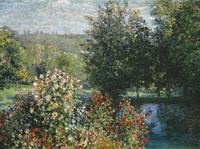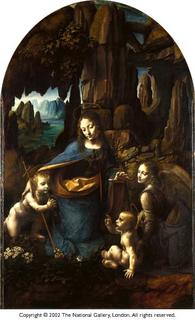The days of dotcom gold are over! ;-) So I am unlikely to bid at the upcoming Impressionist & Modern Art Auction at Christie's on November 1, 2005. :-) But here's a chance for you to bid for a Monet canvas.
 Nymphéas, 1907
Nymphéas, 1907Claude Monet (1840-1926)
Estimated Value: 10,000,000 - 15,000,000 U.S. dollars
The subject of myriad interpretations by the artist, water lilies, became Monet's favorite motif in his twilight years. The first owner of the present picture was Henri Canonne, a Parisian pharmaceutical tycoon and a leading collector of Impressionist paintings. Canonne owned more than forty paintings by Monet in the course of his career, including seventeen canvases from the Nymphéas series.
 Route à Louveciennes, effet de neige, 1869-1870
Route à Louveciennes, effet de neige, 1869-1870Claude Monet (1840-1926)
Estimated Value: 4,000,000 - 6,000,000 U.S. dollars
The present canvas is one of five snowscapes that Monet painted during the winter of 1869-1870. The artist and his family had settled earlier in the year at Bougival, a picturesque suburban enclave about twenty kilometers west of Paris. This canvas was painted during a visit that Monet made in December and January to see Pissarro, who was living in the neighboring town of Louveciennes. As soon as the snowstorm subsided, Monet and Pissarro ventured outside and began to paint views of the road where Pissarro lived, the route de versailles.
 Les rosiers dans le jardin de Montgeron, 1876
Les rosiers dans le jardin de Montgeron, 1876 Claude Monet (1840-1926)
Estimated Value: 4,000,000 - 6,000,000 U.S. dollars
This lush and ebullient garden scene is a large-scale oil study for one of four decorative panels that Monet made in 1876 for Ernest Hoschedé, a preeminent early collector of Impressionist art. The paintings were commissioned for the dining room of Hoschedé's sumptuous country house, the Château de Rottenbourg, situated at Montgeron, about twenty kilometers south of Paris. Drawing upon time-honored themes for the decoration of a country house, they each depict some aspect of the grounds of the Château de Rottenbourg.














